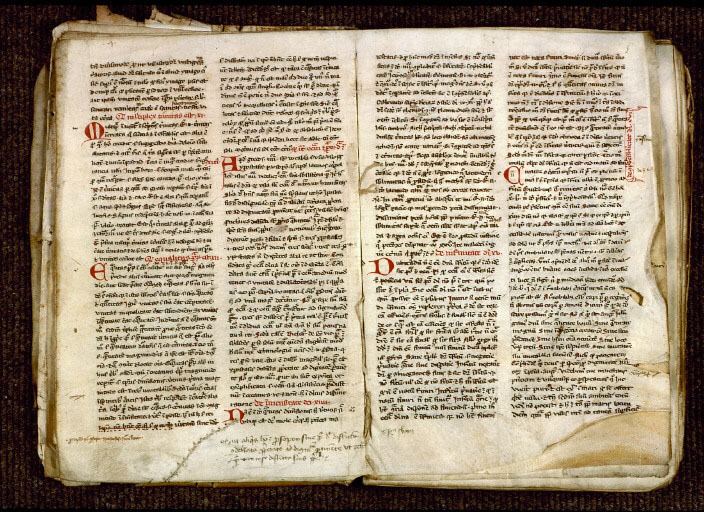 | ||
Codicology (from Latin cōdex, genitive cōdicis, "notebook, book"; and Greek -λογία, -logia) is the study of codices or manuscript books written on parchment (or paper) as physical objects. It is often referred to as 'the archaeology of the book', concerning itself with the materials (parchment, sometimes referred to as membrane or vellum, paper, pigments, inks and so on), and techniques used to make books, including their binding.
There are no clear-cut definitions: some codicologists say that their field encompasses palaeography, the study of handwriting, while some palaeographers say that their field encompasses codicology. The study of written features such as marginalia, glosses, ownership inscriptions, etc. falls in both camps, as does the study of the physical aspects of decoration, which otherwise belongs to art history.
By a close examination of the physical attributes of a book, it is sometimes possible to establish the history and provenance of a book, or to match up long-separated elements originally from the same book. Palaeographers and codicologists may also study the history of libraries, manuscript-collecting and of book-cataloguing.
Important collections
There exist some very good online databases with research functions for medieval manuscripts.
